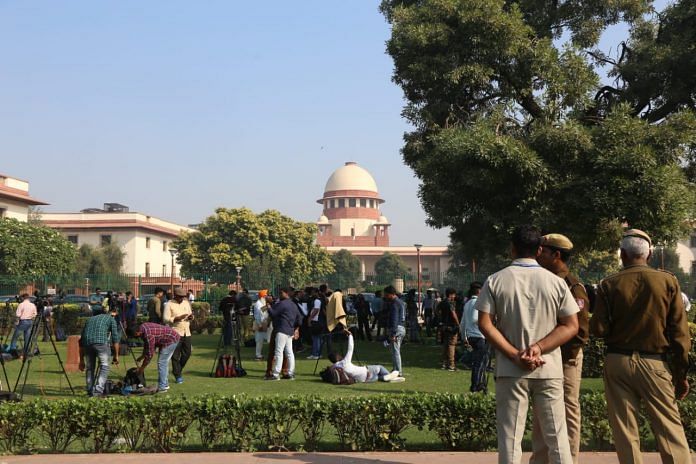New Delhi: The Supreme Court’s Ram Janmabhoomi verdict Saturday repeatedly invoked the Places of Worship (Special Provisions) Act 1991, which seeks to maintain the “religious character” of holy structures as it was at Independence.
For example, the Act prohibits the conversion of a temple into a mosque and vice versa.
The Act was passed during the first year of the P.V. Narasimha Rao government in September 1991, over a year before the demolition of the Babri Masjid. The disputed site at Ayodhya was exempted from the Act.
The court Saturday set aside the disputed Ayodhya site for a Ram temple but it cited the essence of the Act to rebuke the fundamentalists who sought to avenge the excesses of invaders to tear down the 16th-century Babri Masjid in 1992.
Also Read: Advani, Uma, Katiyar — this is what the original Ram mandir warriors are up to
What was the purpose of the Act?
The central thrust of the law is that the nature of a place of worship — church, mosque, temple, etc — will continue to be as it was on 15 August 1947.
According to the introduction of the Act, it seeks to “prohibit conversion of any place of worship and to provide for the maintenance of the religious character of any place of worship as it existed on the 15th day of August, 1947, and for matters connected therewith or incidental thereto”.
In the Ayodhya judgment, the Supreme Court remarked that there are essentially two purposes the law seeks to fulfil.
“First, it prohibits the conversion of any place of worship. In doing so, it speaks to the future by mandating that the character of a place of public worship shall not be altered,” it said its 1,045-page verdict.
Section 3 of the Act, the court noted, bans the conversion of a place of worship or even a section of it “into a place of worship of a different religious denomination or of a different segment of the same religious denomination”.
Section 6 mandates a three-year “imprisonment and a fine for contravening the provisions of Section 3”.
The second aspect, the court said, was that the law “seeks to impose a positive obligation to maintain the religious character of every place of worship as it existed on 15 August 1947 when India achieved independence from colonial rule”.
Act does not apply to Ayodhya dispute
The Ram Janmabhoomi dispute centres on the significance of a single site to two communities — while Hindus believe the disputed Ayodhya site to be the birthplace of Lord Ram, Muslims stake claim on account of the 16th-century mosque that stood here until 1992.
The site hosted a mosque at Independence, but the structure was demolished in 1992.
However, the Places of Worship Act does not apply to the Ram Janmabhoomi dispute and to “any suit, appeal or proceeding relating to it”.
An instrument to preserve secularism
The Supreme Court observed Saturday the Places of Worship Act embodies the secular values of the Indian Constitution and strictly prohibits retrogression.
“The law is hence a legislative instrument designed to protect the secular features of the Indian polity, which is one of the basic features of the Constitution,” the court said.
“Non-retrogression is a foundational feature of the fundamental constitutional principles of which secularism is a core component,” the apex court added.
It then sought to criticise the 1992 demolition of the Babri Masjid, which set off riots across the country.
“Cognisant as we are of our history and of the need for the nation to confront it, Independence was a watershed moment to heal the wounds of the past,” the Supreme Court said. “Historical wrongs cannot be remedied by the people taking the law in their own hands.”
Also Read: Beyond religion, there is an intellectual argument for a Ram Mandir at Ayodhya




Funniest part is while preaching on importance of Non-retrogressive value of place of worship act while closing doors for litigation against Kashi Mathura, whta the SC did is to allow the retrogressive order as one time basis “As if I am doing it for one time and don’t ask me again and again”…
What law you are peddling now? LK Asvani and her highnessUma Bharati joritly got not to be jail Birds using crow Bars. Sheesh, wha BS talks here and there worth nothing.